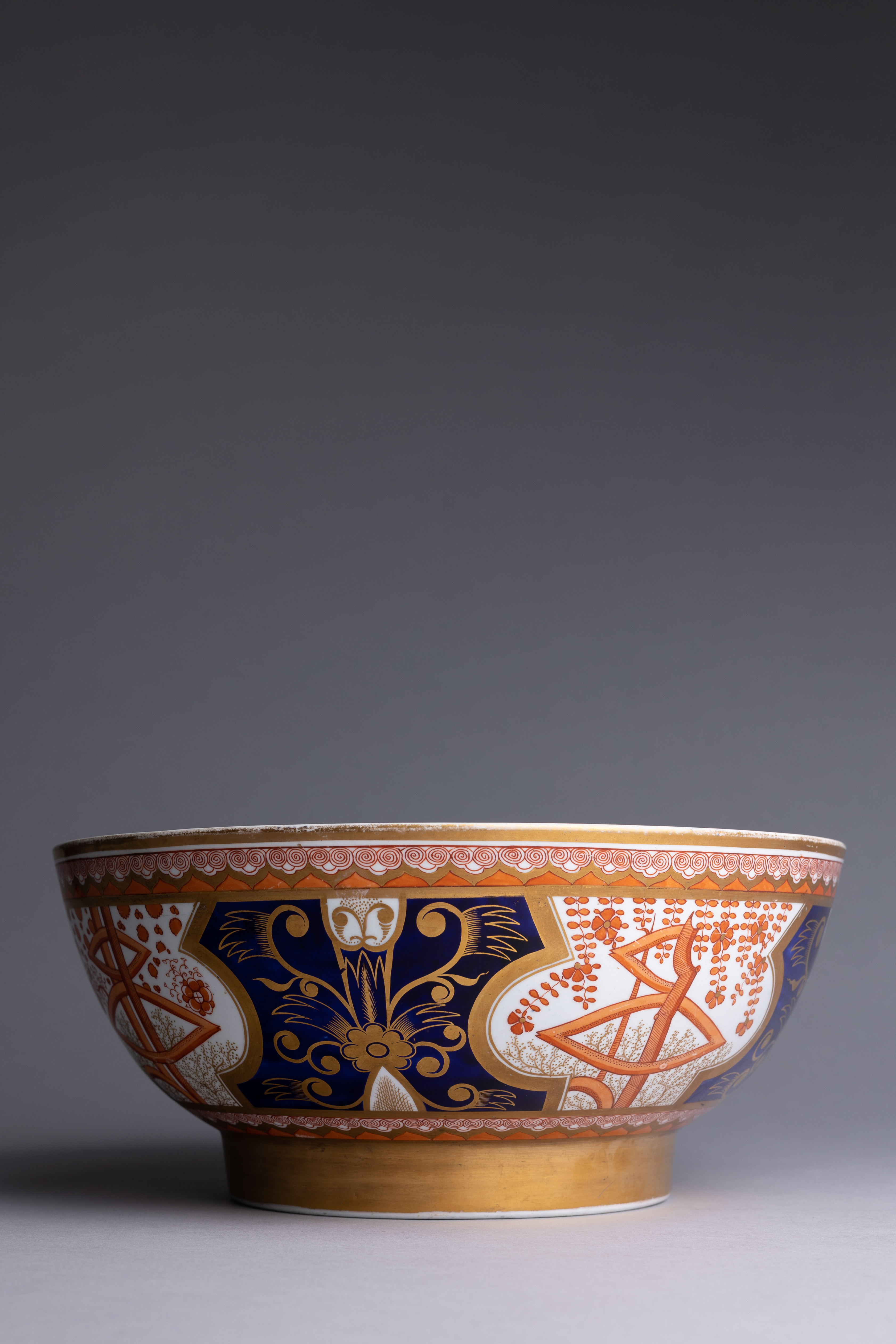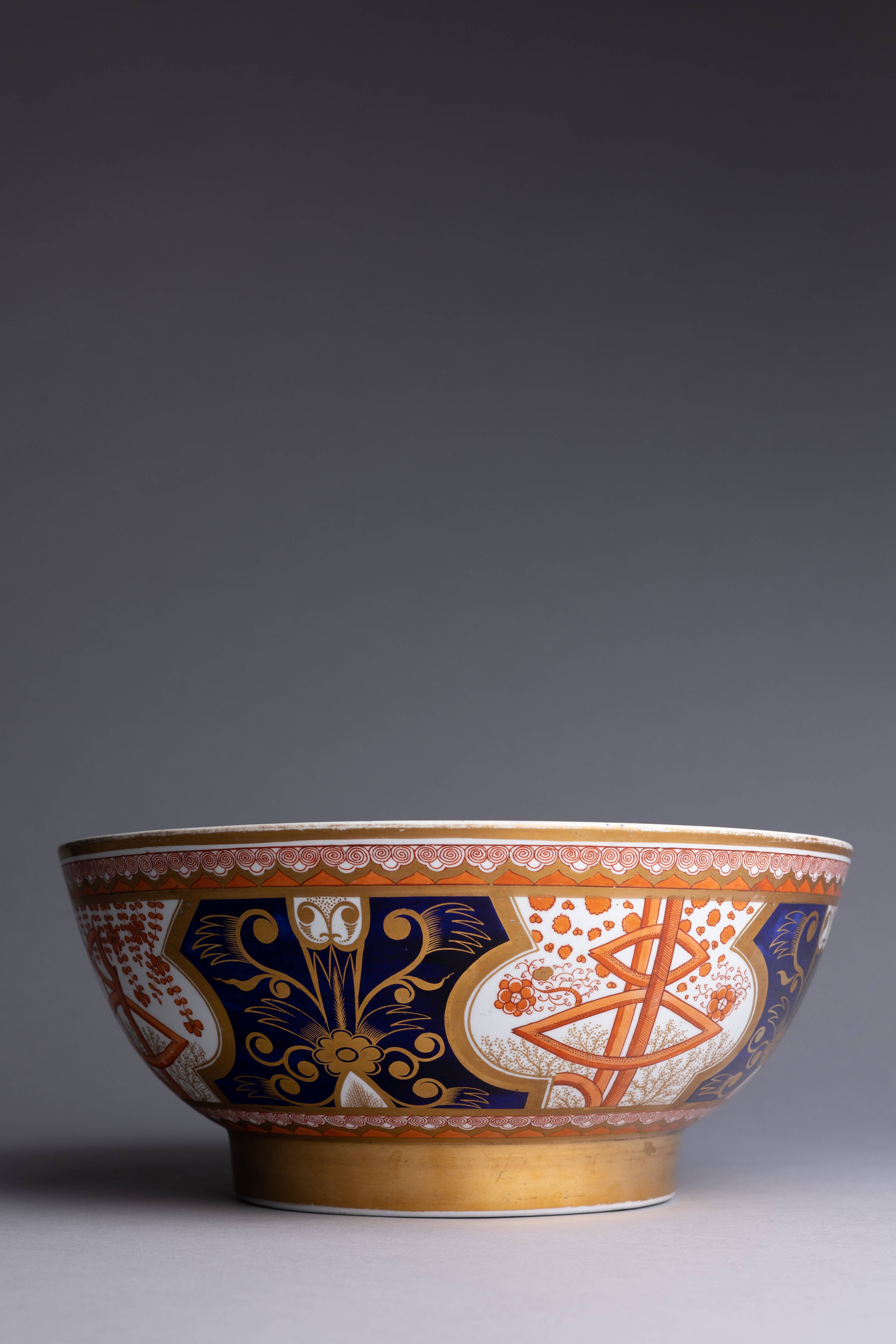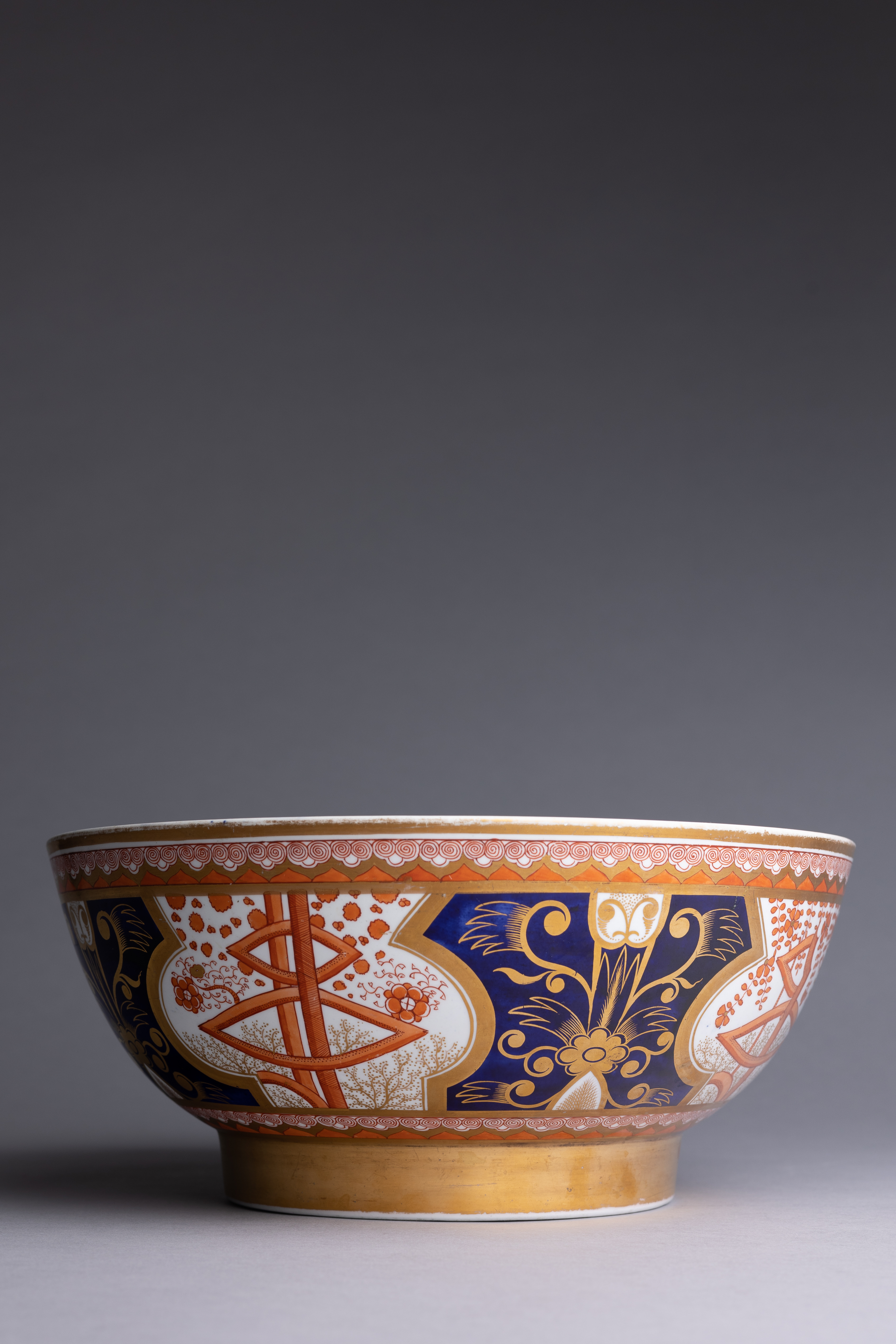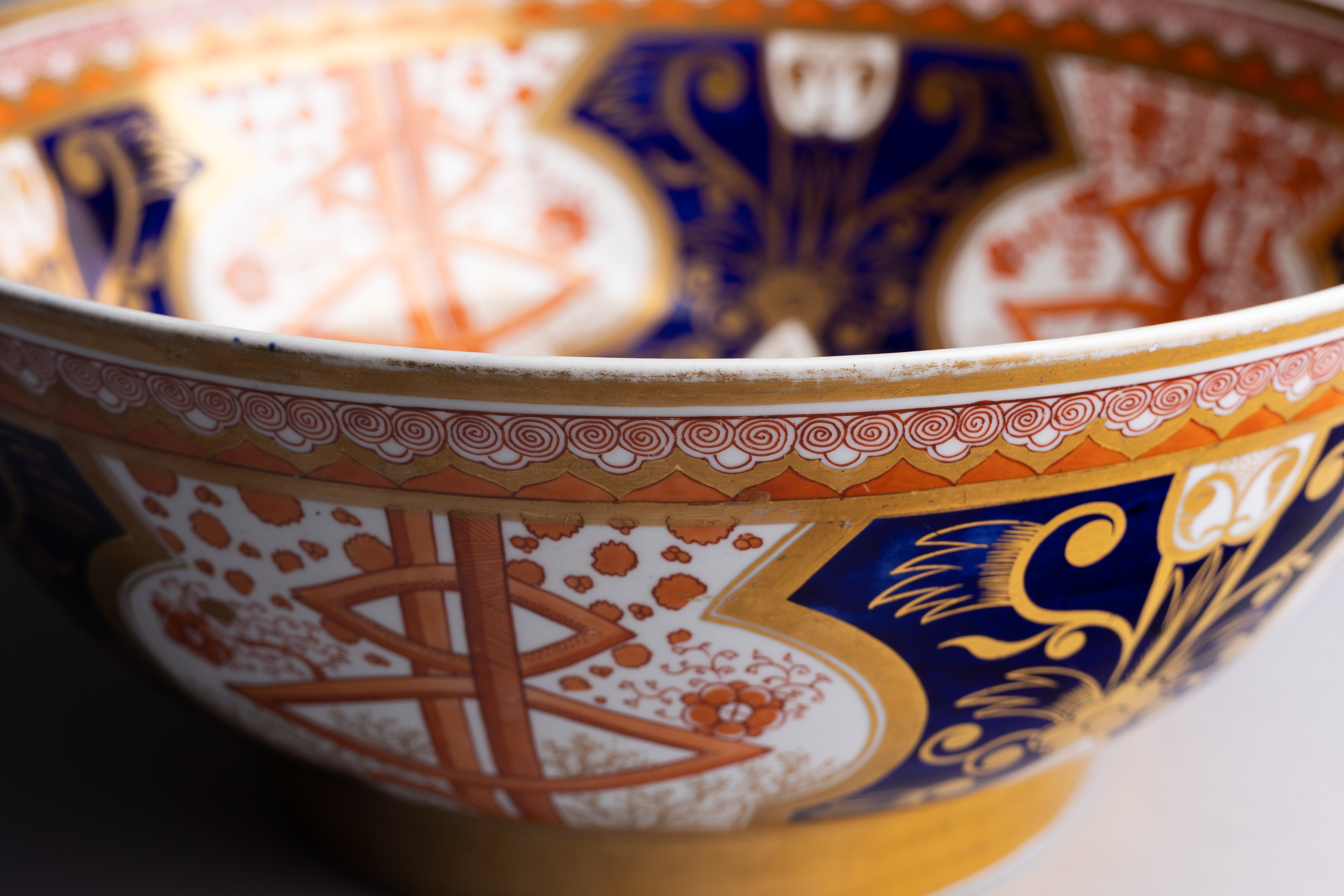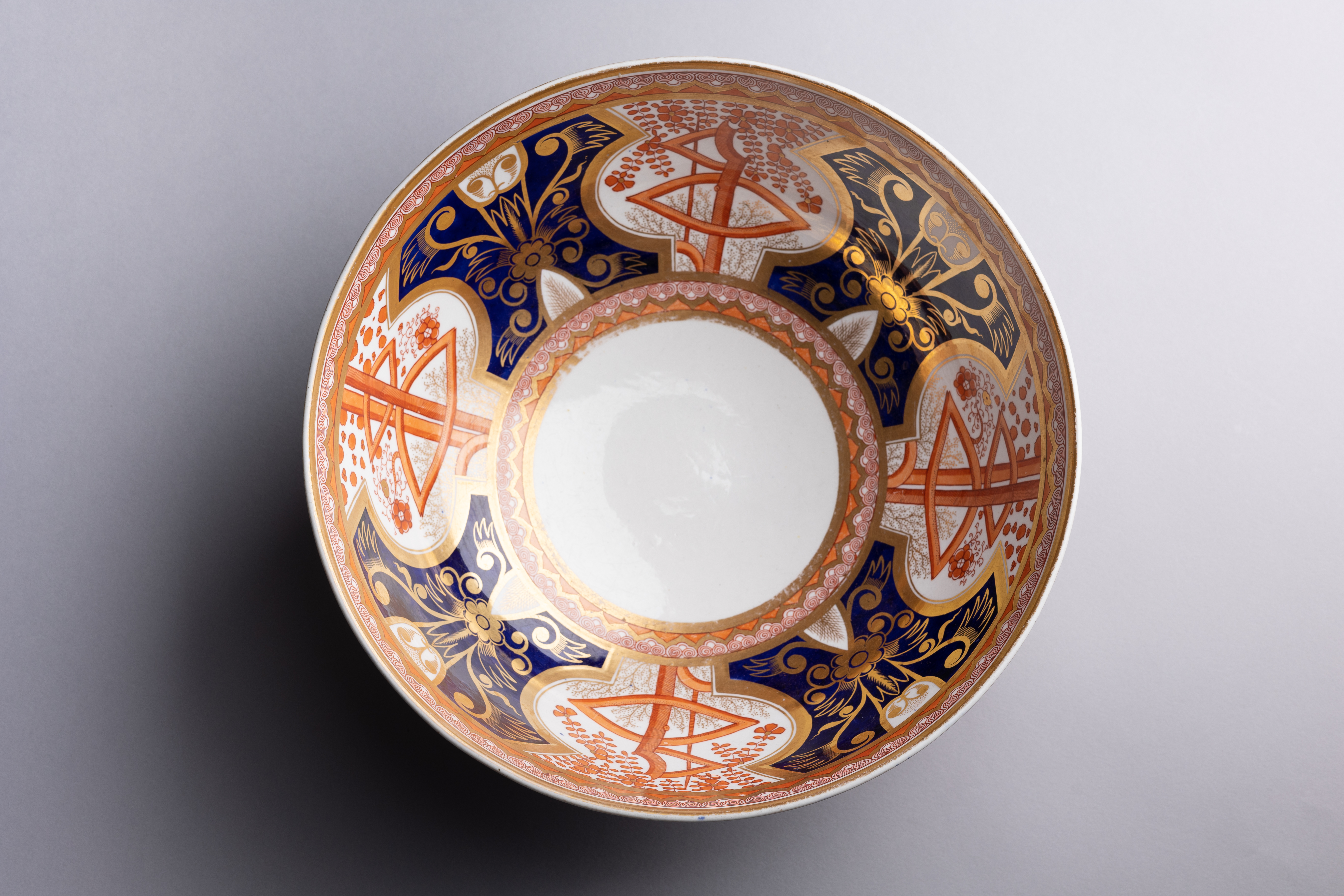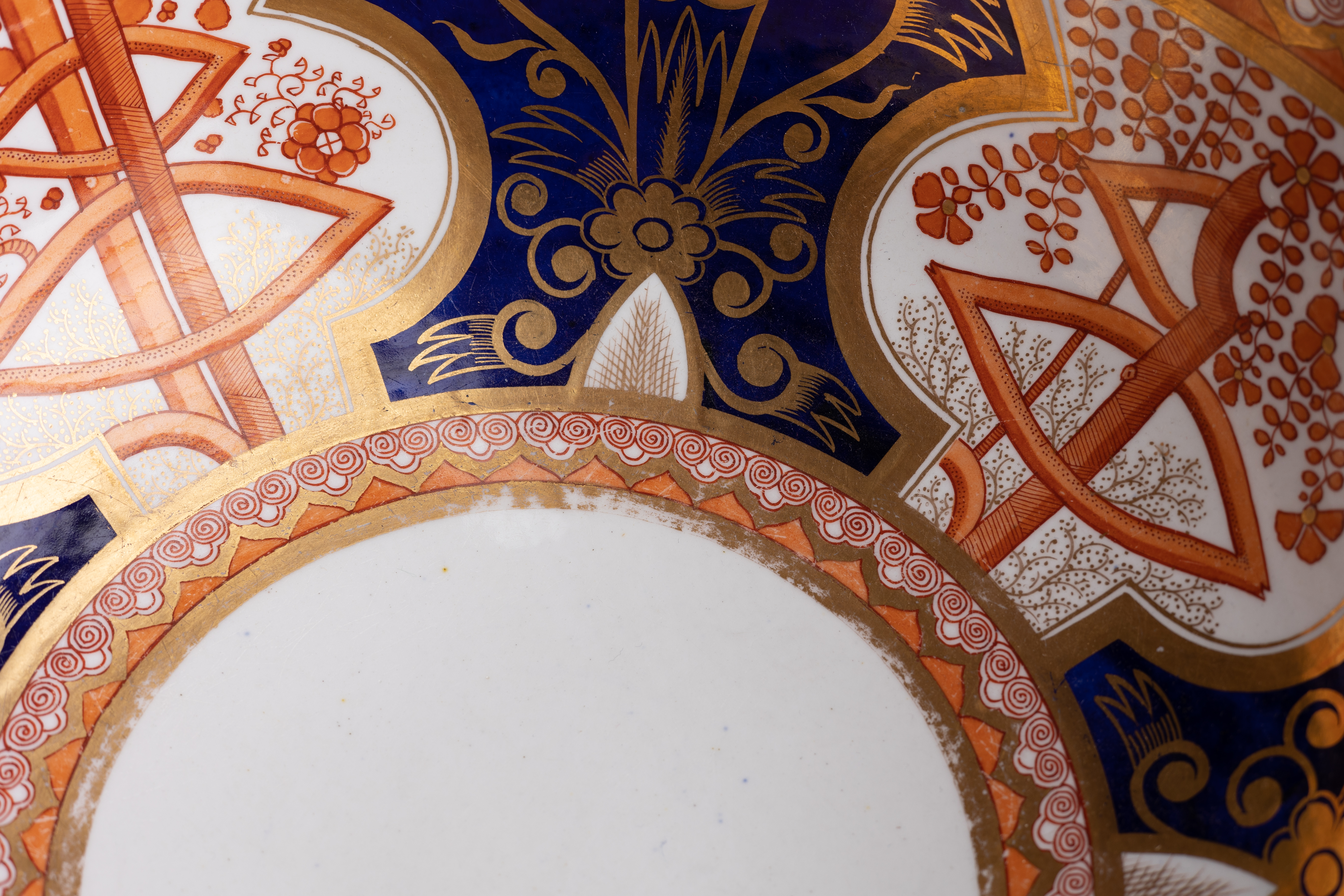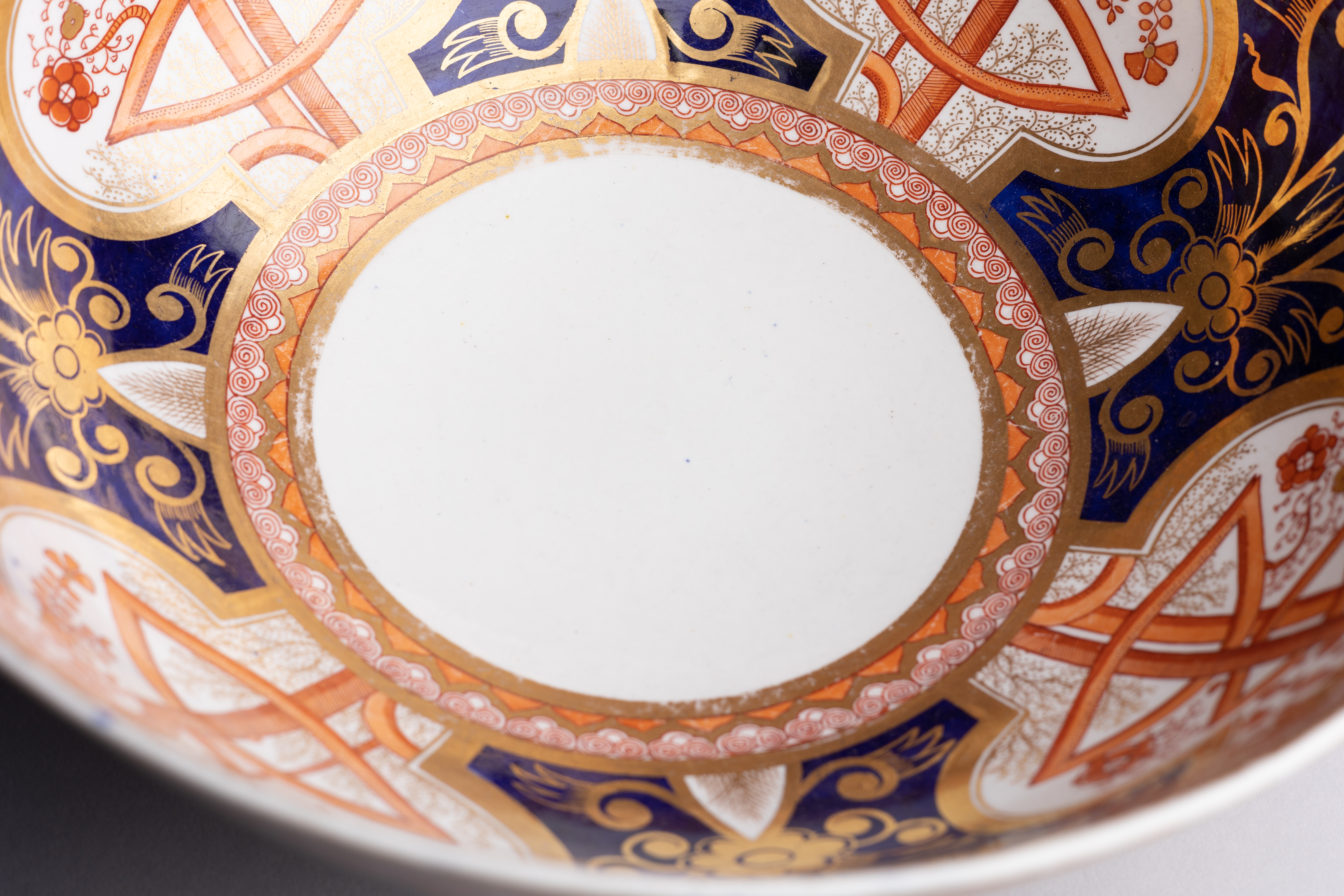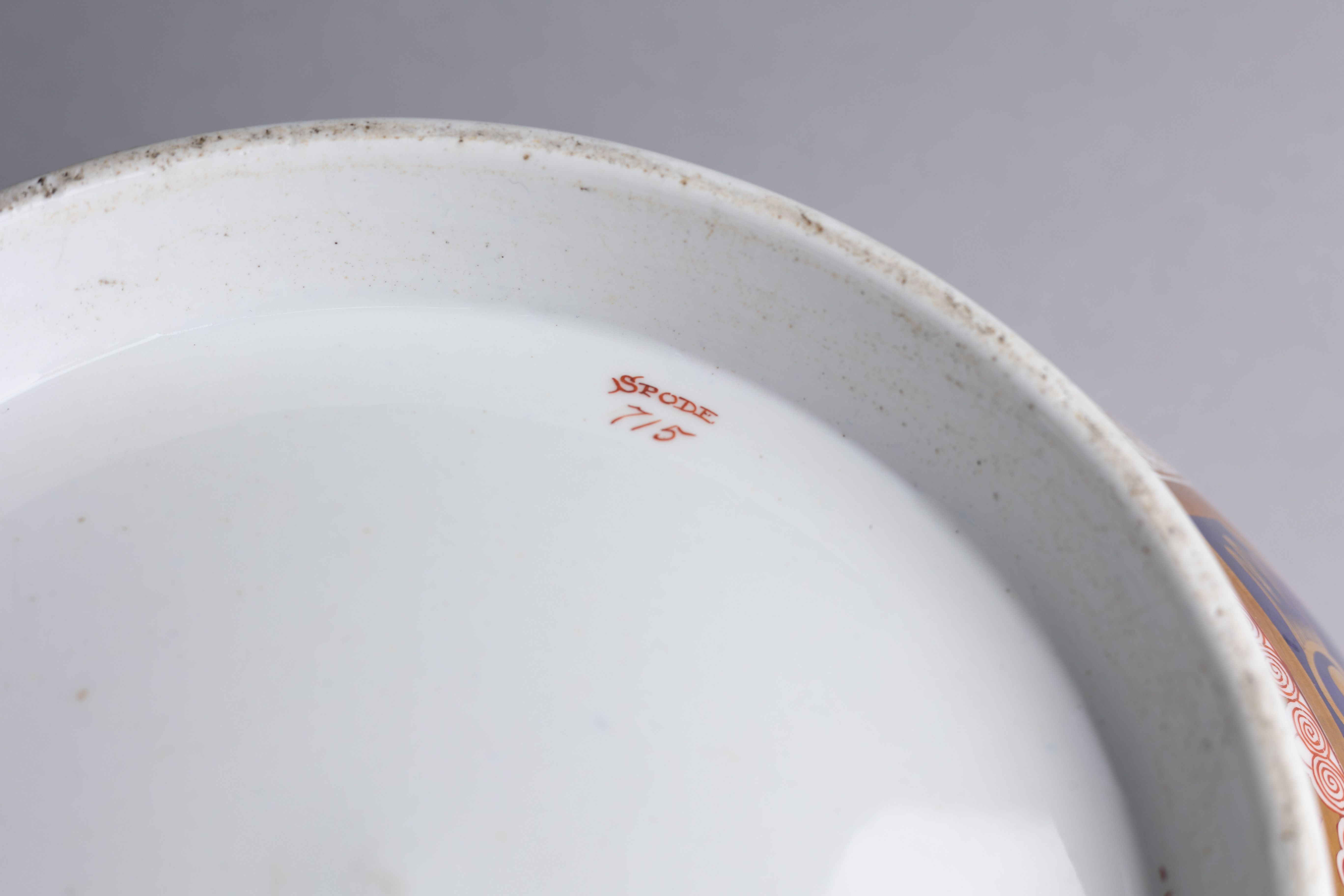The Spode Dollar pattern, named after its obvious visual similarity to the dollar sign, was loosely based on Asian patterns. Chinese and Japanese porcelains exported to the West featured meaningful iconography, the cultural significance of which was lost on European craftsmen and consumers. Instead, Western artists focused on aesthetic functionality of these symbols and reinterpreted them for decorative purposes, a practice which can be seen on this punch bowl.
The Spode Dollar pattern, named after its obvious visual similarity to the dollar sign, was loosely based on Asian patterns. Chinese and Japanese porcelains exported to the West featured meaningful iconography, the cultural significance of which was lost on European craftsmen and consumers. Instead, Western artists focused on aesthetic functionality of these symbols and reinterpreted them for decorative purposes, a practice which can be seen on this punch bowl.
Essay
This Spode ‘Dollar’ pattern punch bowl, designed by English potters after Asian motifs and named for an American currency, presents a fascinating instance of globalization in the ceramic medium.
The Spode Dollar pattern was loosely based on Asian designs. Chinese and Japanese porcelains exported to the West featured meaningful iconography, the cultural significance of which was lost on European craftsmen and consumers. Instead, Western artists focused on aesthetic functionality of these symbols and reinterpreted them for decorative purposes, a practice which can be seen on this punch bowl.
Spode’s “dollar signs” are artistic interpretations of a Chinese character that represented longevity. In Chinese porcelains, the character was often partially obscured by a tree, which translated to Western eyes as visually similar to a $. In this punch bowl Spode has retained the reference to the tree with stylized orange and gold foliage, also presenting the orange dollar sign as bamboo.
The dark cobalt panels of this punch bowl are a Western reimagination of the taotie, a Chinese mythological creature. Depictions of taotie first appeared on ancient Chinese bronzes and jades and took the form of a monster mask thought to ward off evil. Spode’s “taotie” is pure aestheticization of the form: the central rose is the mouth of the mask and the upper tendrils are the eyes.
Condition
Very good. Some very minor wear to the gilding, most noticeably around the rim and to a small area on the inner golden rim on the bowl. Light scratching to the center of the bowl.
For a detailed condition report, please contact us.
This Spode ‘Dollar’ pattern punch bowl, designed by English potters after Asian motifs and named for an American currency, presents a fascinating instance of globalization in the ceramic medium.
The Spode Dollar pattern was loosely based on Asian designs. Chinese and Japanese porcelains exported to the West featured meaningful iconography, the cultural significance of which was lost on European craftsmen and consumers. Instead, Western artists focused on aesthetic functionality of these symbols and reinterpreted them for decorative purposes, a practice which can be seen on this punch bowl.
Spode’s “dollar signs” are artistic interpretations of a Chinese character that represented longevity. In Chinese porcelains, the character was often partially obscured by a tree, which translated to Western eyes as visually similar to a $. In this punch bowl Spode has retained the reference to the tree with stylized orange and gold foliage, also presenting the orange dollar sign as bamboo.
The dark cobalt panels of this punch bowl are a Western reimagination of the taotie, a Chinese mythological creature. Depictions of taotie first appeared on ancient Chinese bronzes and jades and took the form of a monster mask thought to ward off evil. Spode’s “taotie” is pure aestheticization of the form: the central rose is the mouth of the mask and the upper tendrils are the eyes.
Very good. Some very minor wear to the gilding, most noticeably around the rim and to a small area on the inner golden rim on the bowl. Light scratching to the center of the bowl.
For a detailed condition report, please contact us.
This item ships free to the continental US, and globally for a flat-rate fee of $150.
All objects are packed with utmost care by our team of expert fine art shippers. All items are shipped with parcel insurance.
For more information on our shipping policies, please visit our FAQ Page.

